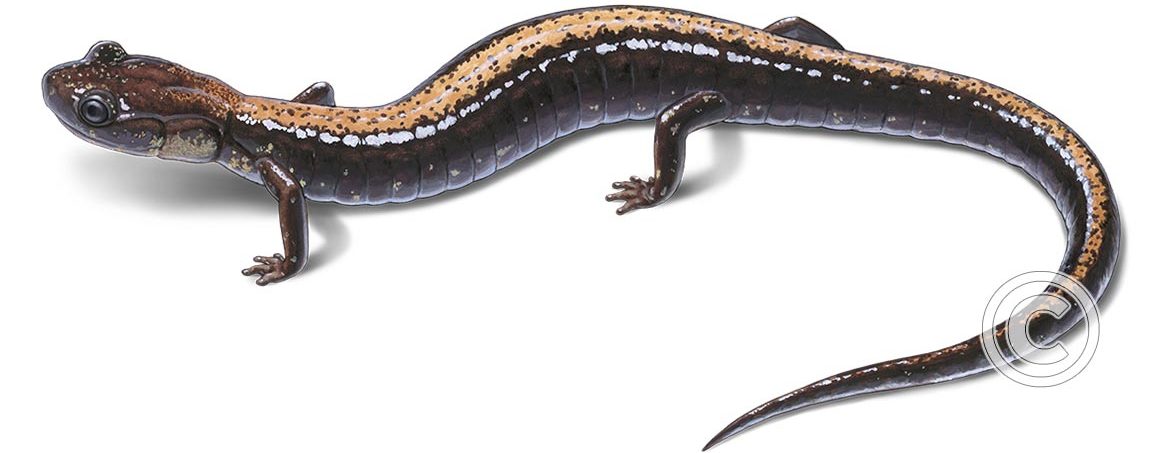Is it Science Illustration or Scientific Illustration?
I’ve always thought that “science illustration” is the more appropriate term, since science is the subject I’m illustrating rather than the manner in which I’m creating imagery. In my view, the term “scientific illustration” gives the impression that my method of illustration is scientific, but I consider my process to be primarily artistic, not scientific. Even so, it seems that the majority of people use the term “scientific illustration.” For that reason, you’ll see “scientific” appearing here and there on my site.
Natural Science Illustration
A natural science illustrator is an artist whose work serves to communicate information and explain ideas about the natural world and its species, objects, processes, and systems. Natural science illustration helps us understand our world.
Most natural science illustrators have an aptitude for observational drawing and an interest in science; they end up in this specialized field after studying either art or science or both. Degree programs in natural science illustration are not common. One can find a list of these at the website of the Guild of Natural Science Illustrators. I was fortunate to have had the opportunity to earn a Master of Fine Arts degree in Science Illustration from the University of Michigan, a graduate degree program that was short lived and no longer exists.
 Making a living as a Natural Science Illustrator
Making a living as a Natural Science Illustrator
It used to be the case that research museums would employ staff illustrators to assist scientists in communicating their research. Some such staff illustrator positions still exist, though they are not numerous. Those who make a living creating natural science illustrations are often self-employed, as I am.
I thrive on the rewards of being self employed. I love that natural science illustration is a creative endeavor and it consistently involves learning more about nature. I also love being my own boss, setting my own schedule, and working from home. Of course, being a self-employed artist is not without its challenges.
Copyright infringement
One challenge of being a self-employed artist in the age of the internet is the constant threat of copyright infringements, which devalue my work. Presenting my work online is a conflict between wanting to showcase my illustrations at a large size where potential clients can appreciate the details, and refraining from making large size images available to those who will steal them for their own uses. The © watermark you see on images in my website portfolio is my admittedly imperfect way of trying to protect my work and the investment my clients have made. On many occasions my intellectual property has been used without my permission, sometimes for commercial purposes. To anyone who may be wondering when it is legally and ethically okay to use someone else’s work without their permission, the answer is: very rarely. Copyright law is complex and the safest, most respectful thing to do is ask the creator for permission, even if you feel your intended use is harmless. If you aren’t able to find the creator, don’t use the work.
Speculative work
Another challenge that I – and really all artists – face is the rampant devaluation of creative work (and exploitation of artists) by crowdsourcing websites and by a vast assortment of contests and competitions aimed at creative people. I wrote an article about this for the Journal of Natural Science Illustration and helped the Guild of Natural Science Illustrators craft a statement about these types of exploitation. You can find my article here and the statement here. The Association of Medical Illustrators sets forth a similar policy here, and the No!Spec website is a resource dedicated to explaining the downfalls of speculative work.
Why hire a professional illustrator?
Given the existence of crowdsourcing sites and considering that artists with little experience might be willing to work for little or no pay, why should anyone hire a professional illustrator? I answer that question with this blog post.
Why not just use photos?
With the advent of digital photography, which can make capturing an image fast and inexpensive, it’s understandable to wonder why anybody needs illustration anymore. I value photography as a tool and may take many photographs of a subject before I illustrate it. However, illustration can accomplish feats that photography cannot. A great synopsis of this issue may be found in the Symbiartic blog post 5 Reasons Your Camera Won’t Steal my Job by Kalliopi Monoyios. I wrote a blog post along the same lines here.
Having said that photography can be fast and inexpensive, I hasten to add that many photographers spend hours trying to achieve a superb shot, made possible only by years of experience, significant research, and after purchasing some expensive equipment. I have a lot of respect for professional photographers, especially those who venture into the wilderness to capture scenes most of us do not have the patience to witness. High quality photographs and high quality illustrations are to be valued.